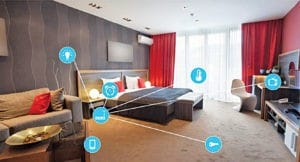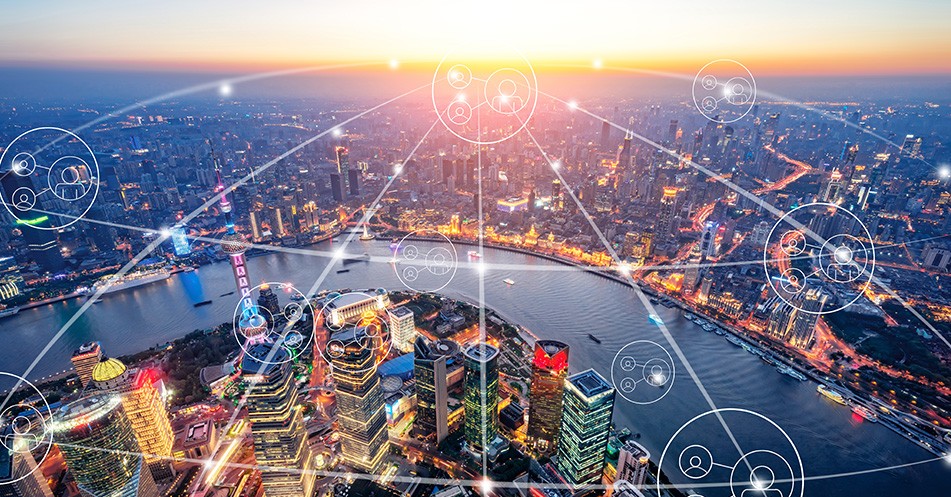With proper implementation, the IoT can be an effective tool to increase customer satisfaction and, consequently, increase business revenue.
The Internet of Things (IoT) enables everyday objects to interact with each other via the Internet. Forbes puts forward a more formal definition, “The IoT is a mesh of physical objects embedded with electronics, software and sensors, and connected to each other over a network, enabling these to collect and exchange data.”
Intel shares that by 2020, the number of connected devices will grow to 200 billion or 26 smart objects per human on Earth.
The IoT has already found substantial implementation by hospitality businesses. It helps increase business productivity, decrease unnecessary costs and labour, and create an overall higher customer satisfaction.
Telkonet reports that a smart energy management system is aware of when a guest room is unoccupied. It can automatically adjust the temperature and reduce energy consumption by as much as 45 per cent.
Five IoT trends in the hospitality business
Discussed below are the top five trending IoT solutions impacting the hospitality industry, ranging from front-of-the-house to back-of-the-house applications.
Guest room automation
Guest room automation allows hotels to make their guests feel comfortable and make accommodations tailored to their needs. For example, Starwood Hotels & Resorts make use of a lighting technique called daylight harvesting. The technology allows them to save energy and increase consistency of indoor lighting by automatically adjusting the LED lighting based on the detected natural light coming into the room.
Predictive maintenance
Sensor-read data are analysed to identify hazardous trends, and alerts are sent to the maintenance team to take necessary preventive strategies beforehand. This is called predictive maintenance.
Cost reduction through automation
Let us assume, manual labour tracks 16 metres at US$ 16 per hour. Imagine the escalation of cost if the same data has to be checked once per hour, once per minute and once per second. Manual checking of such data becomes unviable and that is where the IoT comes in.

Mobile engagement
Today, the number of cellphones globally (6.8 billion) is almost equal to the number of people on the planet (7.6 billion), with over 85 per cent of the world’s population covered under cellular networks. The ever-pervasive cellular devices can be utilised in various ways. Smartphones can be used by guests as the key to their room or for submitting requests to the front desk.
Through the use of EAM CMMS application, smartphones can act as back-of-the-house tools as well. Through mobile devices, engineers can access work requests or work orders on-the-go to increase guest satisfaction. This eliminates the need for paper-based requests that are prone to loss or damage.
Hyper personalisation
Data can be used to customise a room setup as per the guest’s personal choices. For example, an IoT platform could over time memorise that specific guest’s comfort preferences, such as temperature and TV channels, and automatically set up the room for the next stay.
APIs and third-party integration
Vendor consolidation is a possibility with further maturation of the IoT. It will lead to a smaller number of vendors with more cohesive system offerings. Until then, integration will provide work for many, and application programming interfaces (APIs) will be the lifeblood of an integrated IoT system.
As technology advances, application areas of the IoT will widen in the future, adding more trends for guest experience and back-end control.
Limitations of connected devices
While connected devices bring forth improved productivity and efficiency in businesses, these also open gateways to threats like cyber-attacks and security breaches.
Hackers can exploit any device integrated with a hotel’s digital infrastructure. For example, Hotel Casino in London fell prey to cyber threat when a hacker got access to its high-roller database via a thermometer in the lobby fish tank. Attackers used the thermostat as an entry point to get a grip on the network. Once in, they found the high-roller database and pulled that data back across the network and up into the cloud.
Such examples represent potentially extreme cases of vulnerability. Nonetheless, it brings forward the possibilities of risks through unsuspecting connected devices in the vicinity, like thermostats, refrigeration systems, HVAC systems and devices like Alexa.
The IoT is the way forward for businesses. While every technology comes with its own limitations and risks, the best way forward is to leverage the solutions with necessary precautions. With proper implementation, the IoT can be an effective tool to increase customer satisfaction and, consequently, increase business revenue.










